Vegetable Broth: Make Your Own at Home
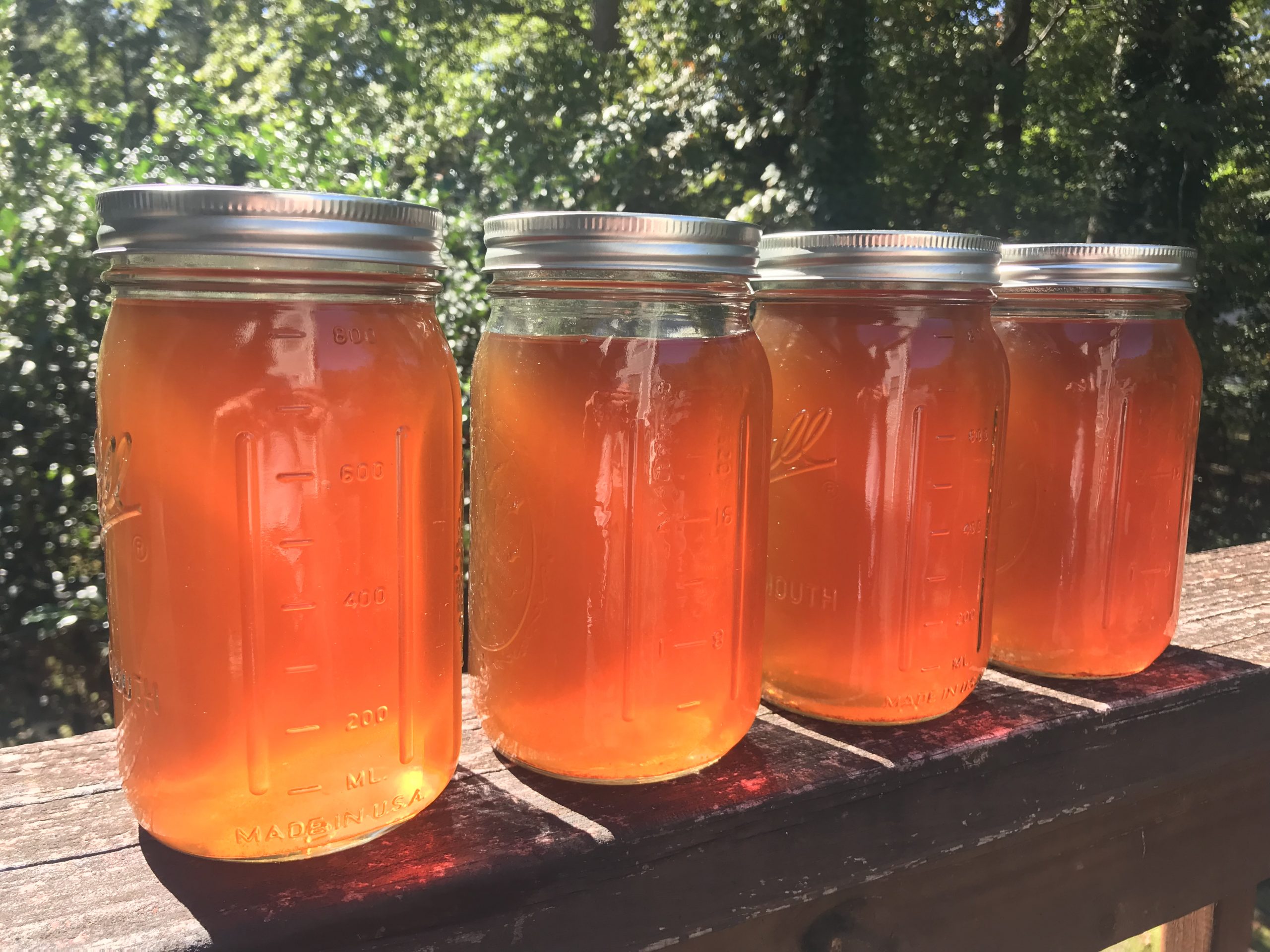
Vegetable broth is so easy to make at home to reduce foods waste, control salt concentration, and save money at the grocery store!
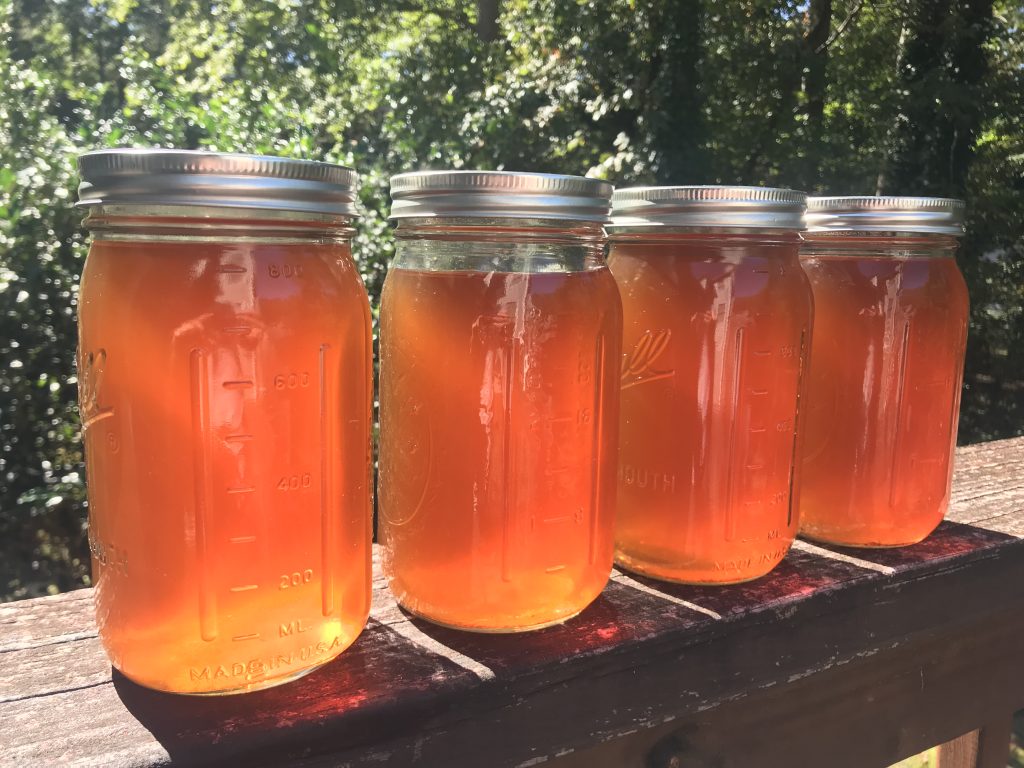
Vegetable Broth vs. Stock
For all intents and purposes, vegetable broth and stock are the same thing. The words are used interchangeably, but there is a technical difference. If you are making chicken or beef broth, you simmer pieces of meat along with vegetables to make a light broth. Stock is longer process that involves mostly boiling bones. Boiling the bones releases collagen and makes a think rich stock which is flavored with vegetables and herbs. So, “Bone Broth” is really stock and nothing new and fancy!
So there is a slight culinary difference when talking about meat-based stocks. But, vegetable stock and broth are the same thing because you’re only using vegetables, herbs, and spices.
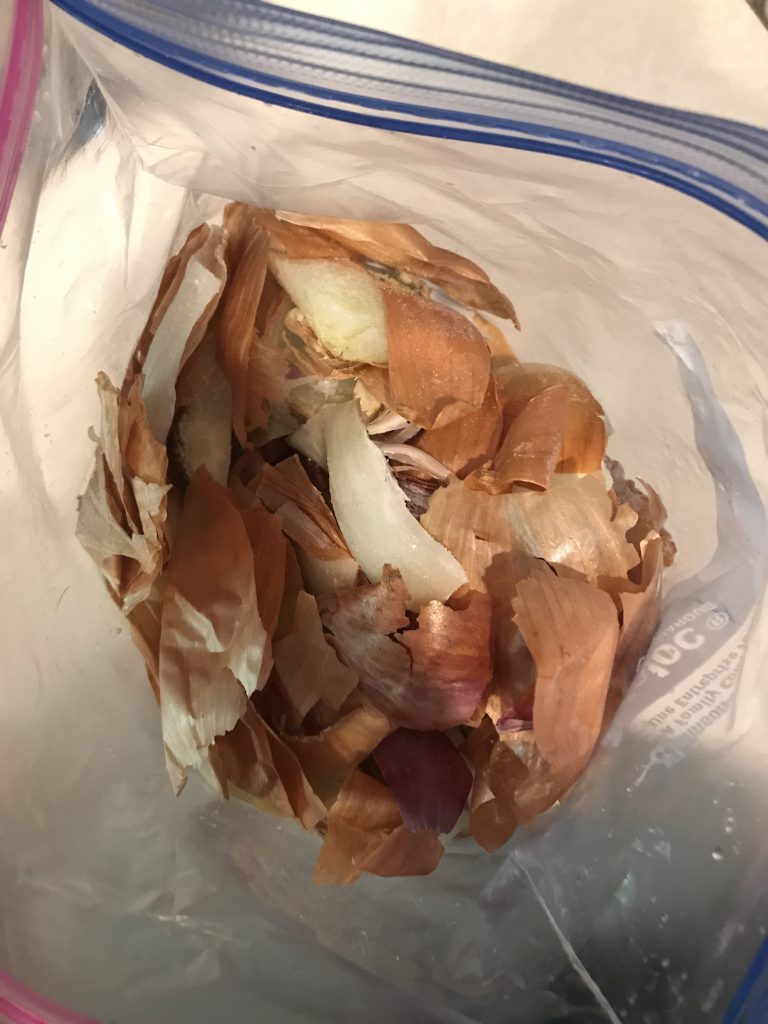
Why Make your Own?
I love making my own vegetable broth for several reasons, but the best part is that it’s an easy way to save money! I use broth a lot in the winter months when I’m making soups, stews, rice dishes, and stuffing to name a few. Instead of buying cartons at the store, I can make batches of broth at home and keep them on hand in the fridge.
Another reason to make your own vegetable broth is to reduce food waste. I store all my vegetable scraps in the freezer to use for my next batch. Making broth let’s you repurpose food scraps, and then you could add them to your compost pile.
Finally, when you make your own broth you get to control the flavor! Broths and stocks are infamously high in sodium. As we’ve talked about before, table salt not as problematic as sodium in packaged goods. I’ve seen some stocks that have almost half the RDA of sodium! So, when you make you’re own you get to control the salt content. You also can choose what vegetables you add in, so if you don’t like mushrooms or celery then you can leave those out!
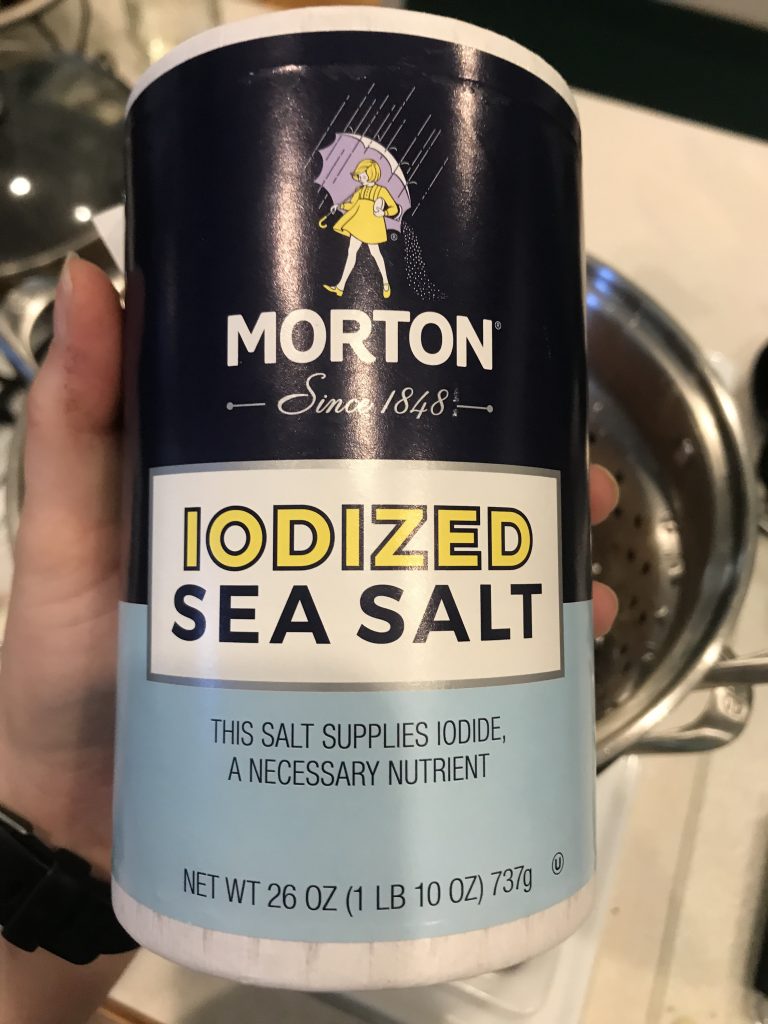
A Note on Salt
In my day to day cooking, I usually use kosher salt or another coarse salt to topping and seasoning my dishes. However, when I make stock or bake, I like to use iodized salt. Iodine is an essential mineral that the thyroid needs to function. Back in the day, thyroid problems were widespread, so the salt was fortified with iodine because everyone eats salt! So, if you like to use coarser salts like me, it’s important to know they are not iodized. So, I keep plain old Morton’s salt on hand for baking and making sauces and broths. That way I know I’m still get iodine in my diet.
What to include?
Typically, vegetable broth that you buy at the store is mostly carrot with some celery, onion, and herbs. So, if you want your broth to taste similar, then you can include similar ingredients. Some of my favorite tings to save are:
- Onion skins and ends
- Carrot skins (if you peel them)
- Celery ends
- Mushroom stems
- Bell pepper scraps
- Garlic skins and small cloves
- Other allium scraps (shallot, leak, green onion, etc.)
- Parmesan cheese rinds (obviously not vegan)
- Herb stems
- Fresh or dried herbs (parsley, basil, rosemary, thyme, etc.)
- Salt and pepper!
Skins and scraps that you usually wouldn’t eat are great to throw in. Also, if I buy a bag of carrots or celery and I don’t get a chance to use them all before they start to go bad, then I’ll throw them in the freezer when they’re on their last leg. This way they don’t completely go to waste and just get thrown out.
There are some scraps I would not include like anything that is too dirty and can’t be cleaned. You don’t want dirt in your broth. I also would not recommend adding brassica scraps like broccoli, cauliflower, and brussels sprouts because of their bitter flavor and strong smell.
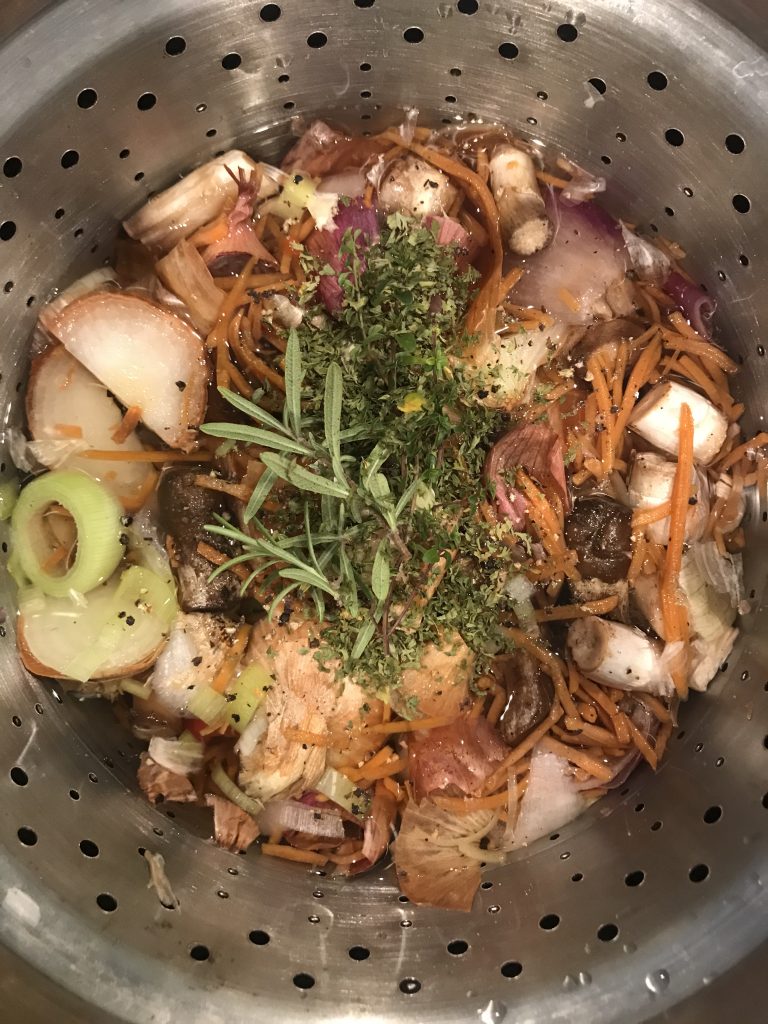
How to make Vegetable Broth
Now, here come the very basic instructions. Save your scraps in the freezer, and when your bag gets full or you need broth, dump the scarps into a stock pot. Fill the stock pot up with water. You don’t need to measure unless you only want to make a specific amount. I usually end up with about 12 cups.
Then, I add in any fresh herbs I might have. If you have parsley stems, they are packed with flavor. If you don’t have any fresh hers, dried work well too. You can use whatever you have or whatever you like in the Italian seasoning realm. I usually use parsley, oregano, thyme, rosemary, and basil. Don’t forget to salt and pepper! Since this has so salt at all, you’ll need to add a decent amount. You can also decide if you want to keep it pretty bland and then season the final dish you use it in fully.
Bring to a boil and reduce to simmer. Then cover the pot and let all the flavors from the vegetable infuse into the water. I usually leave it on the stove for 30 minutes to 1 hour depending on what I’m doing. If you need it right away, you can go shorter. Usually, I’m doing other things in the kitchen, so I just let it simmer. You can’t really over cook it.
When it smells good and tastes good, then just strain out all the scraps and store your broth in the fridge. I like to use jars because they fit in the fridge well. The broth will last 2-4 weeks in the fridge. If it smells funky or has anything growing on it, obviously, toss it out.
Variations on Basic Broth
When you are using vegetable broth in a dish trying to replicate meaty flavors, you need to add some umami flavors. To learn more about umami in vegetarian cooking check out this post.
Miso
Miso is a fermented soy paste, and packed with a sweet umami flavor. You have probably herd of miso soup before, and I think it makes a great vegetarian base for ramen dishes. If you want to make your own broth for ramen, add about 1 tablespoon to about 2 cups of broth. Then I like to add about 1 teaspoon of curry powder or Trader Joe’s Chicken-less seasoning and cook my noodles in the boiling broth. The flavors are remind me of chicken ramen but vegan!
Tomato Paste
Tomatoes are another veggie packed with umami flavor, and tomato paste can be used to make a vegan beef-like broth. When I’m making things like French onion soup that’s typically made with beef broth, I like to add tomato paste. I’ll add about 1 tbsp of tomato paste to about 2 cups of vegetable broth along with soy sauce to get the delicious umami flavors without meat.
And that’s how easy it is to make your own broth at home! Some of my favorite recipes aren’t even really recipes at all! That’s what makes it so easy to try out. You don’t have to measure anything or have specific ingredients. All you need is some scraps, salt, and water to get a little more life out of vegetables scraps you probably would have thrown out otherwise.

